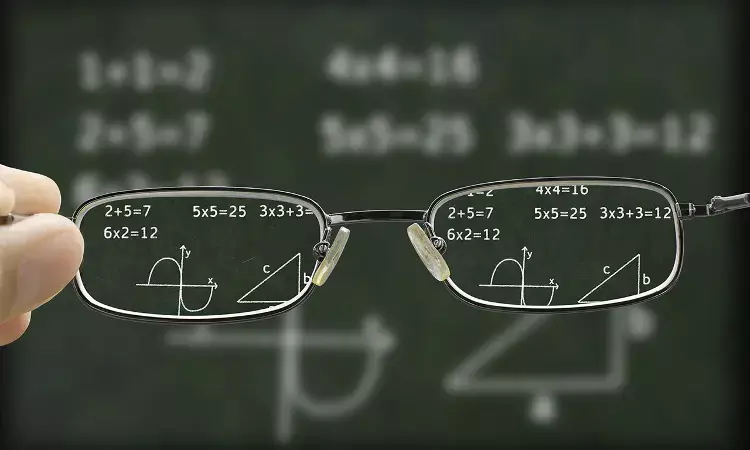- Home
- Medical news & Guidelines
- Anesthesiology
- Cardiology and CTVS
- Critical Care
- Dentistry
- Dermatology
- Diabetes and Endocrinology
- ENT
- Gastroenterology
- Medicine
- Nephrology
- Neurology
- Obstretics-Gynaecology
- Oncology
- Ophthalmology
- Orthopaedics
- Pediatrics-Neonatology
- Psychiatry
- Pulmonology
- Radiology
- Surgery
- Urology
- Laboratory Medicine
- Diet
- Nursing
- Paramedical
- Physiotherapy
- Health news
- Fact Check
- Bone Health Fact Check
- Brain Health Fact Check
- Cancer Related Fact Check
- Child Care Fact Check
- Dental and oral health fact check
- Diabetes and metabolic health fact check
- Diet and Nutrition Fact Check
- Eye and ENT Care Fact Check
- Fitness fact check
- Gut health fact check
- Heart health fact check
- Kidney health fact check
- Medical education fact check
- Men's health fact check
- Respiratory fact check
- Skin and hair care fact check
- Vaccine and Immunization fact check
- Women's health fact check
- AYUSH
- State News
- Andaman and Nicobar Islands
- Andhra Pradesh
- Arunachal Pradesh
- Assam
- Bihar
- Chandigarh
- Chattisgarh
- Dadra and Nagar Haveli
- Daman and Diu
- Delhi
- Goa
- Gujarat
- Haryana
- Himachal Pradesh
- Jammu & Kashmir
- Jharkhand
- Karnataka
- Kerala
- Ladakh
- Lakshadweep
- Madhya Pradesh
- Maharashtra
- Manipur
- Meghalaya
- Mizoram
- Nagaland
- Odisha
- Puducherry
- Punjab
- Rajasthan
- Sikkim
- Tamil Nadu
- Telangana
- Tripura
- Uttar Pradesh
- Uttrakhand
- West Bengal
- Medical Education
- Industry
Patients with high myopia improve from either macular buckling or pars plana vitrectomy

According to a recent study published in the British Journal of Ophthalmology, patients with high myopia obtained anatomical and functional improvements from either macular buckling or pars plana vitrectomy.
A study was conducted to compare the efficacy of macular buckling (MB) and pars plana vitrectomy (PPV) for full-thickness macular holes (FTMH) and associated macular detachment (MD) in highly myopic eyes. Prospective interventional case series of eyes undergoing PPV or macular buckling for FTMH and MD.Best-corrected visual acuity (BCVA) at postoperative month 24. Other measured outcomes include the initial surgical success rate, macular hole closure rate, and myopic maculopathy progression.
The results of the study are:
- A total of 53 eyes from 53 participants were included in this study (26 participants receiving macular buckling and 27 participants receiving pars plana vitrectomy), and finally 49 eyes from 49 participants (25 participants in the macular buckling group and 24 participants in the PPV group) were analysed.
- At postoperative month 24, the BCVA had improved significantly in those that underwent either macular buckling (p<0.001) or pars plana vitrectomy (p=0.04). The difference between the groups was not significant (p=0.653).
- After the primary treatment, the surgical failure rate was significantly higher in the pars plana vitrectomy group than the macular buckling group (25.00% vs 4.00%, respectively; p=0.04).
- The macular closure rate was higher in the macular buckling group compared with the PPV group, but the difference was not statistically significant (64.00% vs 58.33%, respectively; p=0.45).
- Myopic maculopathy development may be more severe following pars plana vitrectomy than following macular buckling surgery.
Thus, patients with high myopia obtained anatomical and functional improvements from either macular buckling or pars plana vitrectomy. However, macular buckling achieved a significantly higher retinal reattachment success rate than pars plana vitrectomy.
Reference:
Macular buckling versus vitrectomy on macular hole associated macular detachment in eyes with high myopia: a randomised trial by Xiujuan Zhao et al. published in the British Journal of Ophthalmology.
Dr. Shravani Dali has completed her BDS from Pravara institute of medical sciences, loni. Following which she extensively worked in the healthcare sector for 2+ years. She has been actively involved in writing blogs in field of health and wellness. Currently she is pursuing her Masters of public health-health administration from Tata institute of social sciences. She can be contacted at editorial@medicaldialogues.in.
Dr Kamal Kant Kohli-MBBS, DTCD- a chest specialist with more than 30 years of practice and a flair for writing clinical articles, Dr Kamal Kant Kohli joined Medical Dialogues as a Chief Editor of Medical News. Besides writing articles, as an editor, he proofreads and verifies all the medical content published on Medical Dialogues including those coming from journals, studies,medical conferences,guidelines etc. Email: drkohli@medicaldialogues.in. Contact no. 011-43720751


